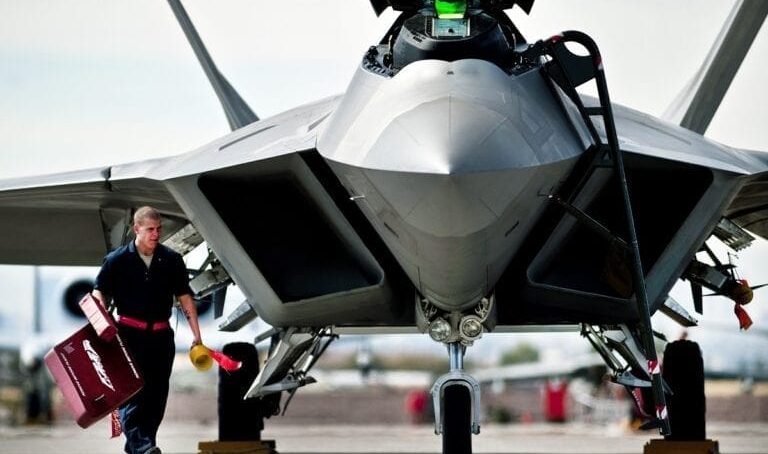
No methodologies for tracking greenhouse gas emissions on military bases or in conflict areas have been published. Therefore, there is no data to help understand the impact of emissions linked to military base and aircraft. The North Atlantic Treaty Organization (NATO) is reportedly developing such a framework for its members.
However, little is known publicly about its methodology, robustness and applicability. It is anticipated that supply-chain emissions or emissions from armed conflicts will go unaddressed.
A standardised methodology and comprehensive assessment framework for greenhouse-gas emissions, including those embedded in products across their life cycles, are needed. Although much can be drawn from other industries, military-specific environments and circumstances must be considered.
There are two major gaps. First, the day-to-day footprint of militaries themselves must include the emissions associated with the management of bases and estates – from providing infrastructure, cement and food to feed and house the troops.
Second, a reckoning is needed on the impacts of infrastructure damage, land-use changes, socio-economic shifts and post-war reconstruction and recovery. Despite two decades of progress on documenting the environmental dimensions of armed conflicts, efforts to calculate these emissions are in their infancy.
Russia’s war in Ukraine has drawn fresh attention to the role of fossil fuels in financing conflicts, as a target and as a tool for political coercion. The Ukrainian government is calculating the financial and environmental costs of the impact of the conflict on the climate — the first time that any conflict-affected state has done so — which will be raised at COP27.
Research areas that need investment include methods for independently verifying military-emissions accounting by third parties, including academics and civil society groups, without compromising national security.
Breaking down emissions by technology sectors will help to prioritise actions and targets. Studies on the feasibility of adopting low-carbon technologies are key. Software that creates a barcode that can be scanned to reveal a product’s emissions data might be helpful. This is already used in the private sector to track emissions throughout a supply chain, for example in food and agriculture initiatives. Such data can inform declarations of emissions for processes, products or services.
Once reporting mechanisms are in place, plans for decarbonising the military must be assessed and improved. Militaries will need support from researchers to do this effectively. One major challenge is ‘lock in’ – emissions from military equipment are fixed for decades, owing to long procurement processes and lifespans.
For example, F-16 fighter planes entered service with the US Air Force in 1979, and are not due to be retired until about 2040. Despite proposals to electrify land vehicles, and to promote synthetic fuels for aviation, fossil-fuel use in global militaries will continue to rise for many years to come.
Warships, combat aircraft and ground vehicles must become more fuel efficient and take advantage of renewables. For reconnaissance, lightweight craft, such as drones and satellite data should be used more often. Solar photovoltaic arrays and electric vehicles should become the norm on military bases. The United Kingdom’s MOD and its Defence Innovation Fund ideas scheme, the ViTAL Living Lab, develop and harness solar, geothermal, hydrogen and electric energy for use on the Royal Air Force’s Leeming base as a testbed.
Federal energy consumption. Pie bar showing the US government is a heavy user of fossil fuels, especially jet fuel.
Life-cycle impacts and raw-material requirements are another black box. There could be unintended consequences when switching to alternative technologies. For some technologies, such as lithium-ion batteries, large amounts of energy – and subsequent emissions – are required in the supply chain. Using a new technology might increase reliance on rare raw materials such as cobalt or antimony.
The materials that are required in wartime could differ from those needed in everyday civilian environments. For instance, research investment is needed into low-carbon materials with strong anti-blast properties in lieu of concrete.
Military innovation might confer some benefits to the civilian sector. New building materials, photovoltaics and new power sources might be useful where energy is temporarily unavailable, such as in disaster-relief operations.
Military bases also need to cope with climate extremes, such as storm-surge flooding, wind, wildfire and drought. The US DOD oversees more than 1,700 international military facilities on coastlines that could be vulnerable to sea-level rise, according to the Congressional Research Service.
A departmental survey in 2019 on 79 installations concluded that nearly two-thirds of them are at risk from recurring flooding, and one-half face threats from drought or wildfires.
All this needs to move beyond plans and high-level discussions that are part of diplomatic efforts, arms-control treaties and other conflict-prevention measures. Crucially, global-security improvements lead to reductions in international military expenditure and its associated emissions.
For example, after the end of the cold war, military emissions across NATO members and the Soviet bloc fell markedly between 1991 and 2000. Total US military emissions declined by 44 per cent.
First, militaries across the globe must be held accountable. Although national net-zero pledges have helped to focus attention in some countries, international standards and obligations must be agreed. The UNFCCC is the most appropriate forum and must strengthen and reform its reporting protocols to include militaries.
COP27 and COP28 are key opportunities for those states that have already engaged on the military-emissions agenda, such as the United States and United Kingdom, to show leadership. Researchers must advocate for common standards for accounting, reporting and reducing military emissions, and these must be transparent, time-bound and measurable.
Second, militaries must improve their capacity to calculate, manage and reduce emissions, and train personnel to do so. Researchers should work with the armed forces to exchange knowledge and best practices from the civil sector, help to develop protocols for military-specific emissions and use or procure low-carbon equipment.
Third, researchers need to document and understand how armed conflicts impact the climate and society. This dynamic is complex but crucial for identifying low-carbon recovery pathways for countries coming into conflict, such as Ukraine, and for understanding the long-range costs of armed conflict. Finally, independent research is paramount to keep militaries accountable and to uphold obligations made under the UNFCCC.
Clearly, there is an urgent need to give researchers the support to conduct independent analyses and provide evidence-based solutions, and militaries should work hand in hand with academia and industry to establish a commonly understood and verifiable means of emissions accounting.
- A Nature report











